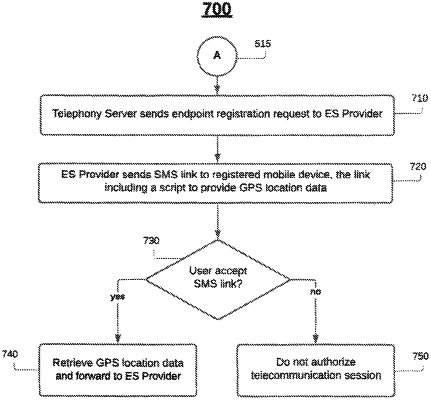| CPC H04W 4/029 (2018.02) [H04M 7/0075 (2013.01); H04W 4/14 (2013.01); H04W 4/20 (2013.01); H04W 76/50 (2018.02)] | 13 Claims |

|
1. A method executable by a server hosted by an emergency services provider server, the method comprising:
receiving a location registration request, via a telephony server responding to a non-emergency telecommunication session establishment request from a telephony endpoint, the request including telephony endpoint identification information and a mobile device telephone number;
determining that location data for the telephony endpoint is not registered with the emergency services provider server;
sending a short message service (SMS) message to the mobile device telephone number, the SMS message including an executable registration link that when executed on a mobile device receiving the SMS message causes the mobile device to retrieve location data of the mobile device;
receiving the location data of the mobile device;
registering, for purposes of subsequent emergency calling, the location data of the mobile device as the location data for the telephony endpoint with the emergency services provider server; and
authorizing the telephony endpoint for the non-emergency telecommunication session only if the telephony endpoint has a location registered with the emergency services provider server.
|